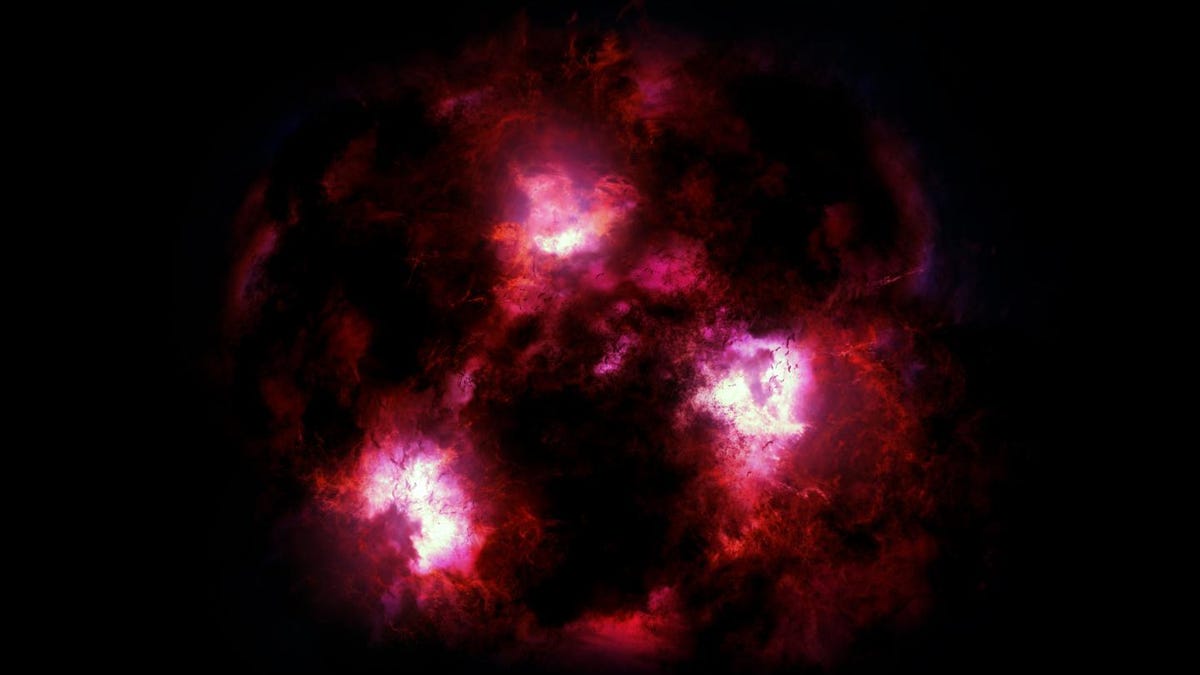Astronomers just discovered an invisible galaxy from the dawn of the universe
It took 12.5 billion years for the signal from this nearly mythical galaxy to reach us.
Most scientists don't believe hairy, snow-loving giant Yetis are real, but astronomers now do believe in a special kind of "cosmic Yeti" galaxy that dates back to the very early universe.
The University of Arizona on Tuesday dropped some colorful words to describe the galaxy: monster, beast, ghostly. "Like a cosmic Yeti, the scientific community generally regarded these galaxies as folklore, given the lack of evidence of their existence," the university said in a statement.
University of Arizona astronomer Christina Williams spotted the ancient galaxy as a faint blob in observations from the Atacama Large Millimeter Array in Chile. She suspected the galaxy "was probably really far away and hidden by clouds of dust."
An animation shows what this galaxy might look like, complete with gas clouds lit up by the activity of star formation.
"We figured out the galaxy is actually a massive monster galaxy with as many stars as our Milky Way, but brimming with activity, forming new stars at 100 times the rate of our own galaxy," said astronomer and study co-author Ivo Labbé with the Swinburne University of Technology in Australia.
The team, led by Williams, published its findings on Tuesday in The Astrophysical Journal. The science team estimates that the signal ALMA spotted took 12.5 billion years to reach us on Earth. ALMA is operated by the European Southern Observatory and is on a mission to study the origins of galaxies, stars and planets.
The observation of this massive galaxy is helping scientists learn more about how such big galaxies formed during the universe's early days. Williams described this hidden galaxy as a "missing link."
It will require more study to find out if this mysterious "Yeti" is actually just one in a pack of cosmic Yetis. This is a question that NASA's next-generation (and much delayed) James Webb Space Telescope is expected to help answer.
"JWST will be able to look through the dust veil so we can learn how big these galaxies really are and how fast they are growing, to better understand why models fail in explaining them," Williams said. We may discover these distant monsters are quite common.
Originally published 1:36 p.m. PT


